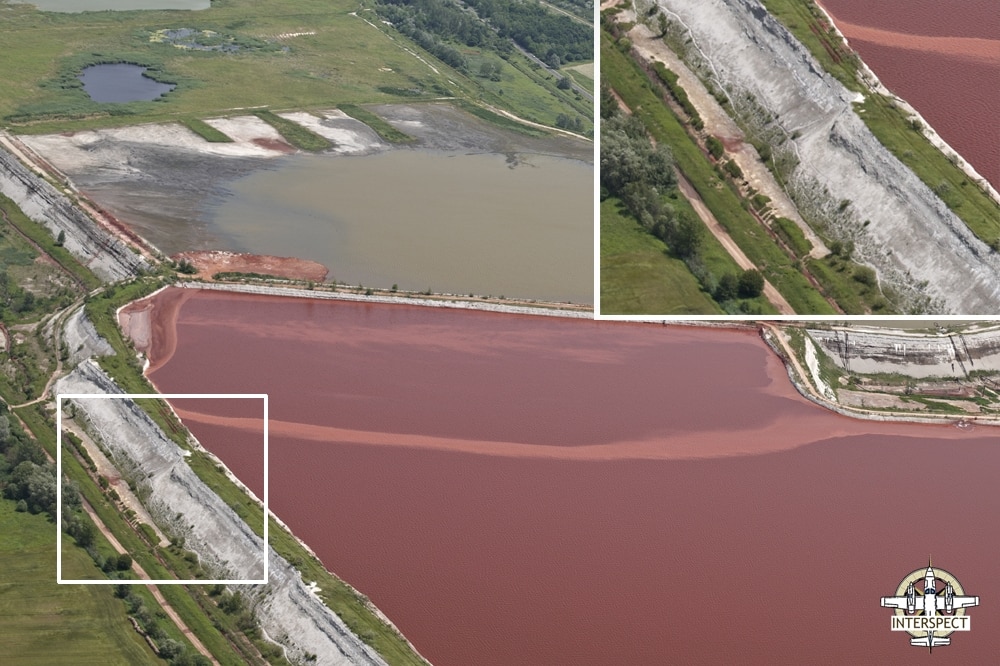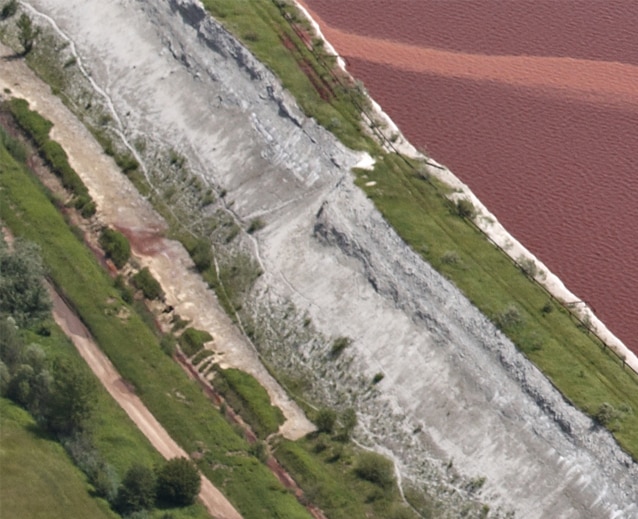  |
Kolontàr, Hungary: An aerial photograph taken in June showing a damaged and clearly leaking sludge pond wall shows that the toxic mud disaster in Hungary and subsequent pollution of rivers including the Danube could have been avoided, WWF-Hungary said today.
The sludge pond dam wall burst Monday flooding six villages with toxic red mud. Another victim succumbed to injuries in hospital yesterday and two bodies were found during clean up operations today, taking the death toll to seven with one person still missing.
“This new evidence of the degraded state of the walls and significant leakage more than three months before the incident should be cause for an urgent investigation, not just of this disaster but of the state of Hungary’s other toxic sludge ponds,” said Gábor Figeczky, the Acting Director of WWF-Hungary.
“This points to neglect and a failure of regulation as a prime contributing factor to this disaster.”
The photograph was taken by a team from the company Interspect, who were engaged in taking photographs of sludge pools, open-cast mining, and other potentially dangerous, unhealthy industrial sites.
Company representatives told WWF that the state of the Kolontár reservoir was particularly worrying to them because of its close location to family houses.
“It is clearly visible on the photos made in June 2010 that the sludge is leaking and part of the wall of this 10th pool was weakened,” Figeczky said. “Ultimately, the wall broke in another place, but what you have here is a very clear signal that it was failing and needed inspection and attention over its full length.
“Red sludge is visible in the havaria channels surrounding the factory, which clearly refers to leakage. The red color is generally from iron oxides not soluble in water — so it doesn’t fully indicate the presence and extent of leachate containing other toxic substances in movement in the ditch.”
“Since the sludge pools are located very close to houses, and natural values, the state of these pools should have been expected regularly with particularly strict measures. WWF is waiting for an explanation of this failure.”
WWF-Hungary urged a fast investigation of remaining reservoirs in the area and others around Hungary, along with an urgent aerial mapping of Hungary’s Danube banks.
“Now is the time to assess any hazardous areas in the country that could be a possible threats to human life and the environment” said Figeczky. “These photos show that there are technologies available even in Hungary to detect potential hazards within a couple of weeks.
“We are particularly concerned about the much larger reservoirs at Almásfüzitő, built over earthquake prone swamp land right on the river bank just 80 km upstream from Budapest, where all sorts of other materials seem to have been tipped into the alumina processing waste ponds.”
This press release and the accompanying photographs were issued by WWF on 8 October 2010. See, also, Katrina Schwartz, “Making Environmentalism in Postsocialist Hungary” (MRZine, 1 November 2008).
| Print
